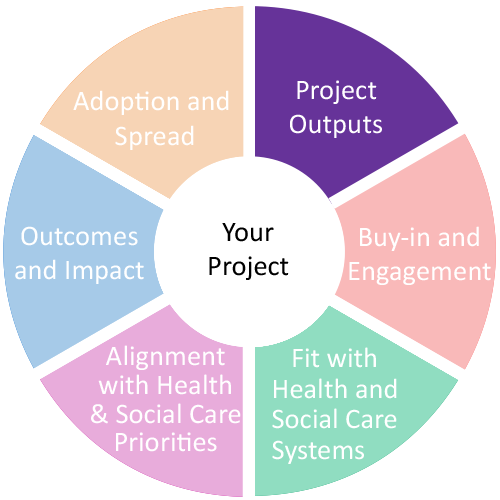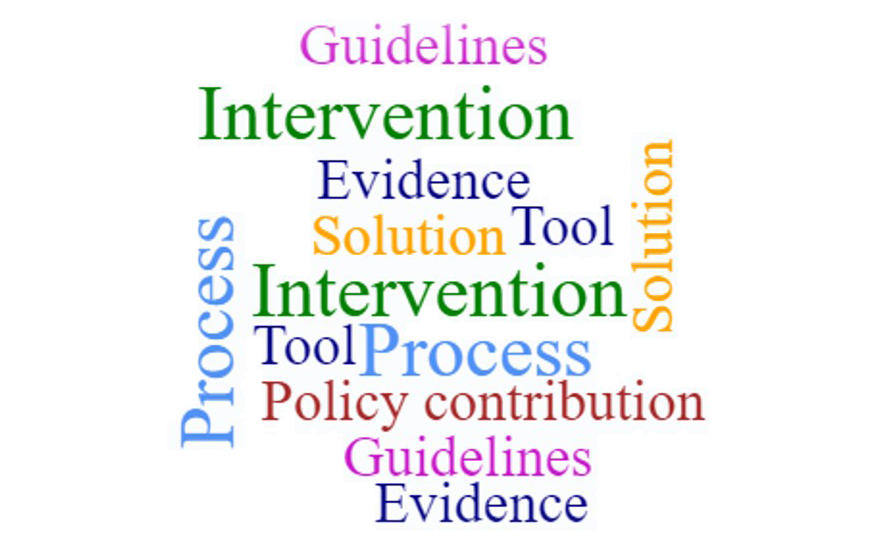Project Outputs
This domain helps you consider the deliverables or what is to be produced as a result of your project. These are the project outputs. Outputs can be singular or multiple and include any of the following: policy guideline(s), innovation, intervention, website or a tool.

What should I consider for my project?
To identify the project outputs, think about the audience(s) you wish your project outputs to reach. For example, is it patients with a particular health condition or perhaps care home staff? Considering the intended audience(s) will help ensure that project outputs are tailored and produced in a way that they are easy to use, accessible and available for those they are intended. Project outputs should be considered early on in a project.
- What are the anticipated timelines for implementing or taking up and using project findings in real world practice?
- Are these timelines realistic and achievable?
- Who will the outputs be relevant to? (e.g., patients, social care service users, family carers, charity sector professionals)
- How will the outputs be made available and in which format? (e.g., online and/or via print)
- How will the outputs be made accessible to those you are intending to reach? (e.g., are they freely accessible?)
- How long will they be available? (e.g., a few months or several years)
Consider what resources will be needed to support both the production and maintenance of project outputs. Resources can be any number of factors such as time, administrative and marketing costs and training. Resources should be identified in the planning stages of a project so that expenditure associated with these can be costed into the project requirements.
- Who will be needed to support this output? (e.g., marketing costs in raising awareness)
- How will this output be maintained? (e.g., will it require regular work to maintain the resource?)
- What resources will be needed to maintain this? (e.g., administrative costs in running a website)
Case study
Person-centred care training resource for care homes project (PCCP)
“As we had early discussions to identify our project outputs within our team, we were able to plan resources required to support this. For example, we knew that one of our key outputs would be a website to be made freely available to all. However, as we engaged with our wider networks of stakeholders across different care homes, we realised that some also expressed interest in having a printed training resource which they could share with colleagues when hosting in-person workshops. This presented a challenge initially as we had not costed for the development of these printed materials. However, as we were still at an early stage of the project, we were able to apply for a small grant which helped accommodate these costs. Stakeholder involvement was invaluable to ensuring that our project outputs matched their needs. We will take this learning forward in future projects and consult with a range of stakeholders initially. This will help to support our project outputs to be available and accessible in formats which best fit the needs of those using them.”

Take away tips
- Early engagement with stakeholders about what project outputs are helpful for them can enhance their longer-term value and utility
- Early engagement also ensures that resources can be prioritised and financially supported